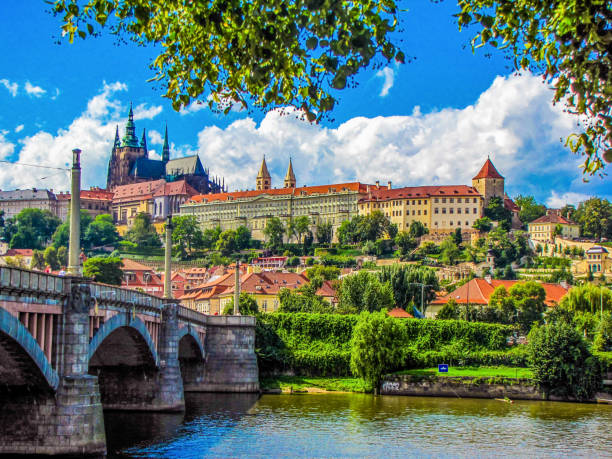Published on
August 18, 2025
Czechia is on track for its strongest tourism year ever in 2025, driven by a powerful mix of domestic travelers and international visitors from countries including Germany, Poland, the USA, Austria, Slovakia, Ireland, and Argentina. The combination of historic city experiences in Prague, cultural and wine tourism in South Moravia and South Bohemia, and wellness retreats in Karlovy Vary has created a compelling reason for both short-term city breaks and longer stays, fueling record-breaking arrivals and overnight stays.
Czechia witnesses a remarkable surge in tourism during the second quarter of 2025, with both domestic and international travel contributing to strong growth across the country’s hospitality sector. Hotels, guesthouses, and other lodging facilities collectively hosted 6.3 million visitors who spent more than 15 million nights, reflecting an average stay of 3.38 days per guest. Domestic travelers represented a slight majority at 53.3% of total arrivals, while international visitors made up 46.7%, indicating a healthy balance between homegrown tourism and global interest.
Germany, Slovakia, and Poland were the leading source countries for foreign tourists, contributing 665,000, 269,000, and 259,000 visitors respectively. Alongside these neighboring countries, Czechia also attracted significant numbers of travelers from the United States, the United Kingdom, and Austria. Interestingly, guests from Kazakhstan, Israel, and Saudi Arabia tended to stay the longest, highlighting the appeal of longer-stay experiences for visitors from more distant markets.
Prague continues to shine as the centerpiece of Czech tourism, welcoming more than 2.2 million travelers in the second quarter of 2025, a figure that represents over one-third of all visitors to the country. Tourists flock to the capital to explore its historic landmarks, cultural attractions, and vibrant urban life. Outside Prague, the South Moravian and South Bohemian regions continue to thrive as preferred destinations, hosting 625,000 and 494,000 visitors respectively. These areas attract travelers with rich cultural programming, scenic landscapes, and wine tourism, offering a distinct complement to the urban appeal of the capital.
Among all regions, the Karlovy Vary area stands out for its extended average stay of 4.67 days, a reflection of its renowned spa and wellness offerings that encourage longer visits. In contrast, the South Moravian region records briefer visits, averaging just 2.88 days, while Prague sees stays of around 3.27 days, largely driven by travelers choosing quick weekend getaways and short city breaks. This diversity in regional visitation patterns underscores the country’s ability to cater to both short-term urban experiences and prolonged leisure escapes.
Year-on-year comparisons reveal consistent upward trends, with total arrivals rising by 5.6% and overnight stays increasing by 6.9% compared to the same period in 2024. Growth in overnight stays was more pronounced among international travelers, who experienced an 8.8% increase, while domestic overnight stays rose by 5.3%. Certain foreign markets recorded exceptional growth, signaling new areas of opportunity for Czech tourism. Ireland led the surge with a 33.6% rise in arrivals, followed by Argentina at 28.6%, and Japan at 23.4%. These strong gains highlight Czechia’s expanding appeal beyond traditional European markets and demonstrate its capacity to attract a diverse global audience.
The tourism expansion also emphasizes a strategic blend of city, cultural, and wellness tourism across different regions. Prague’s timeless heritage and vibrant culture, paired with South Moravia’s vineyards and South Bohemia’s scenic landscapes and festivals, showcase how diverse attractions together fuel the nation’s tourism momentum. Meanwhile, the sustained appeal of spa destinations like Karlovy Vary reinforces the importance of specialized experiences in extending visitor stays and increasing economic impact.
This robust growth signals a resilient tourism sector in Czechia, supported by steady domestic travel and a broadening international presence. With rising visitor numbers from both neighboring countries and distant markets, Czechia continues to strengthen its position as a key European destination. The combination of short city breaks, longer wellness retreats, and culturally rich regional experiences ensures the country’s tourism remains diverse, competitive, and appealing to a wide range of travelers throughout 2025.
